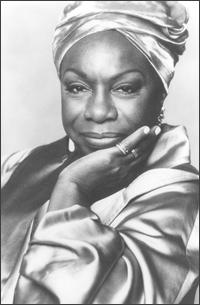|
|
|
|
All Music Guide Analysis |
 |
 |
Why Analyze AMG?
AMG is a reference site that is widely used by music writers and music collectors. It offers biographies, reviews, discographies, and definitions for different genres and styles of music. The site claims to be "the most comprehensive recorded music reference available," and I've yet to find a competing database that comes close to the thorough coverage allmusic.com offers. They don't claim to have every artist and record release in history, but they seem to have information on any nationally released album you would ever want information on. Several bands that haven't been recognized nationally are breifly listed, and the site acknowledges independent releases as well. Recently, the site completely changed its design and now includes expanded artist information, advanced search options, the addition of classical music archives, more music samples, picture and album browsers, more guidance from editors on must-haves and new releases, and a spiffier site design. Users must now register to access some of this new "premium content." Read more about AMG's makeover here |
 |
Front Page Design
The front page has grown more "busy" over the years, and the columns, search options and animated advertisements can be a little overwhelming. "Classmates.com" is usually blaring at the top of the layout, but more obtrusive ads running down the right-hand side don't show up until further within the site. A toolbar across the top includes the search box. Users can specify their search by choosing an artist's name, album, song, or classical work. Using the advanced search option, you can set parameters such as: "indie rock albums with an AMG Rating of 5 stars." The left-hand column allows users to check out new releases, or to explore the site by theme, mood, genre, country or instrument. This column also offers links to the "Editor's Choice" section, where AMG editors pick the best new releases from the past three months, the "Writer's Bloc" section, where the main 33 writers reveal their all-time favorites, and links to top searches and the Site Guide. We also find a link to info on AMG's "authoritative" books about country, blues, jazz etc., and links to its sister sites: allmovie.com and allgame.com The main section in the middle of the front page gives more visually appealing invitations to the "Editor's Corner" and "Explore by..." sections, as well as photos and links to a "Hot Artist" and a little blurb, "Today in Music History." The column on the right is a list of new releases with album-cover icons and options for listening (with Windows Media Player) or buying (through Barnes and Noble.) |
 |
Genre, Mood, Theme: What's the Difference?
AMG has developed a unique was of classifying music. Because words like "indie," "pop," and "alternative" have lost their meaning in contemporary music writing, AMG defines these terms in a historical context and elaborates with very specific qualifiers. "Genres" are general families of music. The site separates classical genres form popular genres, and includes 21 options in the popular-genre category. Examples of genres are: bluegrass, blues, folk, jazz, rap and rock. Say you click on rock. You are taken to a page with a long paragraph defining "rock" and a breakdown of different styles of rock music. AMG considers the main styles of rock to be: alternative/indie rock, art-rock/experimental, folk/country rock, hard rock, pop rock, punk/new wave, rock and roll/roots, soft rock, psychedelic/garage, Europop, foreign language rock, and British Invasion. Those styles are then broken down into sub-styles. Maybe you're interested in soft rock. Under the broad style "soft rock" you can click on a definition of "soft rock," or the related sub-styles: singer/songwriter, adult contemporary, or pop rock. Maybe singer/songwriter is your favorite. Clicking on that will take you to a discussion of the style in its historical context as well as links to related styles and info on influential artists. All of this navigating was under the umbrella "genre." In a separate realm of classification, AMG offers a list of close to 200 moods by which you can select an album. Examples are: brassy, brooding, innocent, sardonic, searching, sprawling and warm. Feeling summery? Clicking on that link brings you to a selection of quintessential "summery" albums: The Monkees' "Greatest Hits," Sly and the Family Stone's "Anthology," Matthew Sweet's "Platinum and Gold Collection" and Stevie Wonder's "Hotter Than July." The album icons change when you refresh the page, giving you more ideas for satisfying your summery mood. "Themes" lead to albums and not artists, just like the "mood" category. Not only do they cover topics like "parenthood" and "reminiscing," but also situations that call for a certain kind of music, like "small gathering" or "night driving." Trying to seduce someone? AMG suggests Johnny Mathis' or Same Cooke's "Greatest Hits," or "The Best of Percy Sledge." |
 |
Writing Style and Site Design:
Let's take a look at AMG's writing style by dissecting the Dylan pages. Each artist has an "overview" page that gives a portion of the bio, some clickable album-cover icons, photos, birth/death dates, relevant genre and styles and links to other artists who have influenced or been influenced by whomever you're reading about. Other tabs in each artist's section are: Biography, Discography, Songs, Credits, and Charts and Awards. Stephen Thomas Erlewine seems to do the most important biographies and reviews. It is a daunting task to cover Dylan, so Erlewine starts the biography with a straightforward sentence, "Bob Dylan's influence on popular music is incalculable." The 17-paragraph bio begins by citing Dylan's various contributions and summarizing his career. Then he starts chronologically, beginning with his birth as Robert Allen Zimmerman, and ending with his accomplishments of the late '90s. Biographies are updated when artists reach new heights or release noteworthy albums. These biographies are reliable sources for music journalists because they avoid the bitter sarcasm found on alternative music sites such as pitchforkmedia.com or the sycophantic tones found on record label sites. AMG has developed a journalistic voice of its own in its extensive catalogue of album reviews. Reviews usually judge work fairly and support points with evidence instead of going off on self-indulgent tangents. Reviews are accessed in the discography section where albums are listed alongside whatever rating they received. AMG uses a five-star scale, with one being the worst, five being the best, and five with a "check" being an "AMG pick." Albums are rated against the artists' other work -- a Dylan album would not be compared to a Janet Jackson release. AMG recognizes '63's "The Freewheelin' Bob Dylan" and '65's "Highway 61 Revisited" as Dylan's best. It takes a while to learn the site design and navigate comfortably, but that's only because there are so many options and sections to explore. Most pages have light backgrounds with pastel accents: periwinkle, light green, and gray. A plethora of clickable album icons and artist photos give the site a magazine quality. The new design is definitely more cluttered than the old, but worth growing accustomed to. |
 |
An Athens Music Writer's Perspective:
I know several music journalists in Athens who use AMG regularly to expand their knowledge, check facts and attain new adjectives. Matt Toledo is web master of the Athens Musician Network, a local site that features reviews, previews, photos and footage of Athens music happenings. He's been editing the AMN since 1997 and also wrote for The Athens News for a little while. I asked Matt for some thoughts on AMG, music writing and online journalism in general. When asked about the benefits of online journalism he said, "Things can get published quicker, and (online journalism's) low overall cost means that alternate news organizations can compete with the bigger sources. It gives the little guy a chance to be heard." He noted some of the negative aspects of online journalism as well. "Well, not all online journalists hold themselves to the same professional standards as your local paper," he said. "For all you know, the guy writing the story could be an eight year old boy who didn't check his sources. Also, it's easier for people to publish propoganda and pass it off for news." Matt said he thinks there are two challenges in music writing. "First of all, you have to stay current. It's easy for anyone to fall into their own little comfort zone of a favorite music style and never venture out of it. Appreciating other forms of music takes effort, but I think it's worth it," he said. "Second, it's hard to keep your writing from falling into a pattern. There are some questions that need to be asked at every interview and it's hard to come up with new ways of asking them. You can make an acceptable interview just asking these default questions, but the really good interviewers do their research and ask questions beyond those universal ones." Matt often uses AMG as a reference site and said, "The new setup is pretty cool. It definitely has a lot more interactive stuff going on. I think it's better than the old design." |
| Site design and AMG analysis by Sarah Laubacher, 2004 |